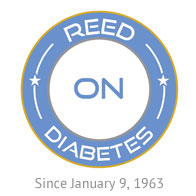Two years after graduating from college, I became frustrated with the number of hypoglycemic episodes and the impact they had on my exercise, work and relationships. So, in 1983 I sought help from a specialist and set up an appointment with an endocrinologist.
During my first visit, a nurse tested my blood sugar with a drop of blood from a “finger stick” applied to the end of narrow 3-inch long test strip. The strip was then inserted into a machine about the size of a brick and it showed my blood sugar after 60 seconds. I was impressed that a machine in a Doctor’s office could instantly provide what had taken days after drawing a vial of blood from my arm and sending it to a lab.
I wasn’t prepared for what the nurse said next:
“The test strips are yours to take home.”
“What?”
“You can now check your blood sugar anytime you want.”
At that moment, my life with diabetes changed: I was empowered to start managing my diabetes.
Two decades of responding to unplanned, unexplained and unmeasured lows were now behind me.
I tested before meals and two hours afterwards. Patterns developed, providing an understanding that certain foods caused spikes in my blood sugars. (Yep, no more orange juice for breakfast!) Data before and after exercise illustrated how much my blood sugars dropped. As a result, I reduced my insulin if it was active during exercise and even realized that the best time to exercise was when I didn’t have insulin on board.
I am grateful for the arrival of blood meters in early 1980s, the scientists and companies that brought them to market, and the medical professionals that shared them.

